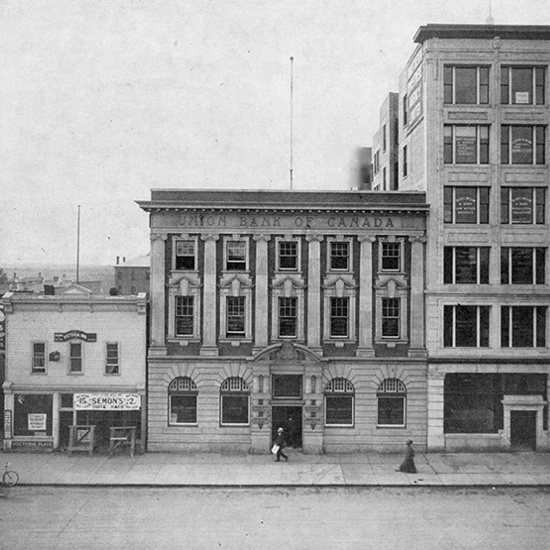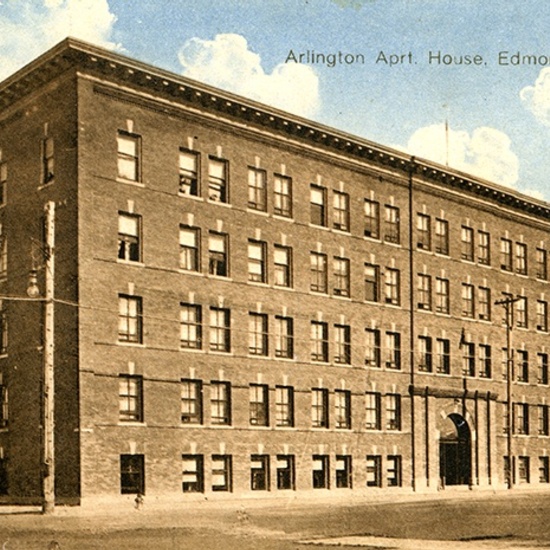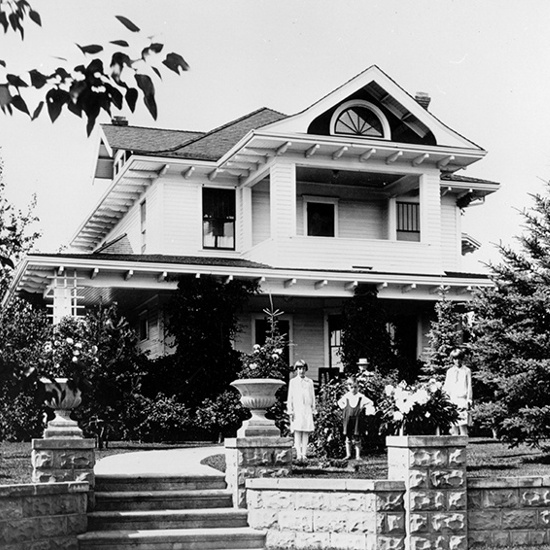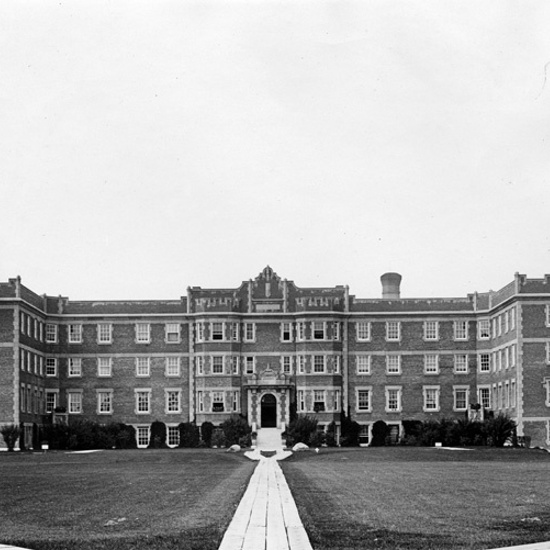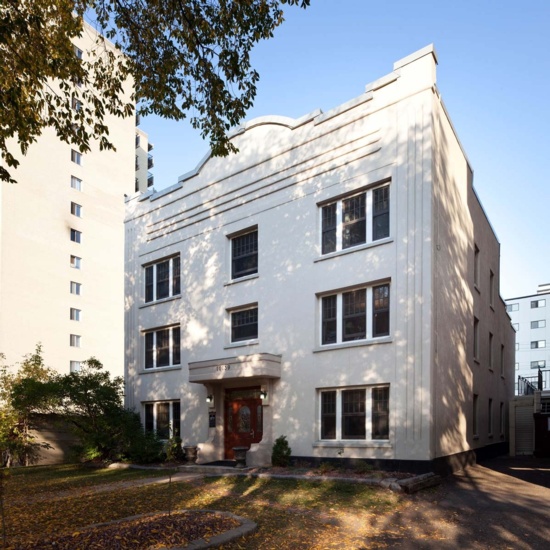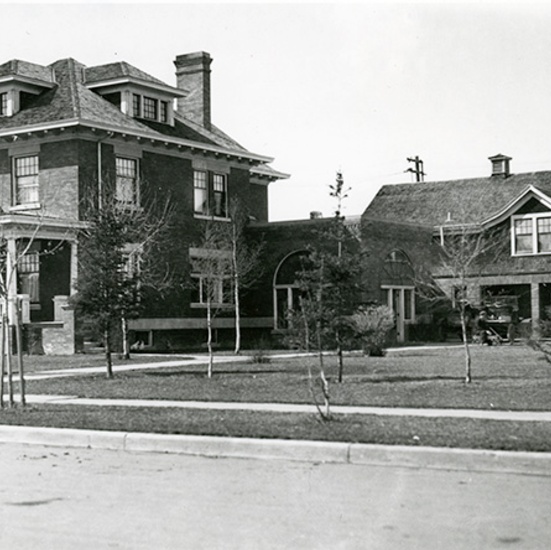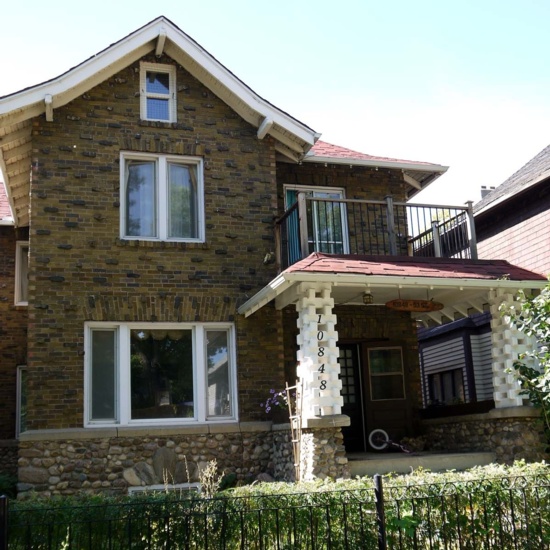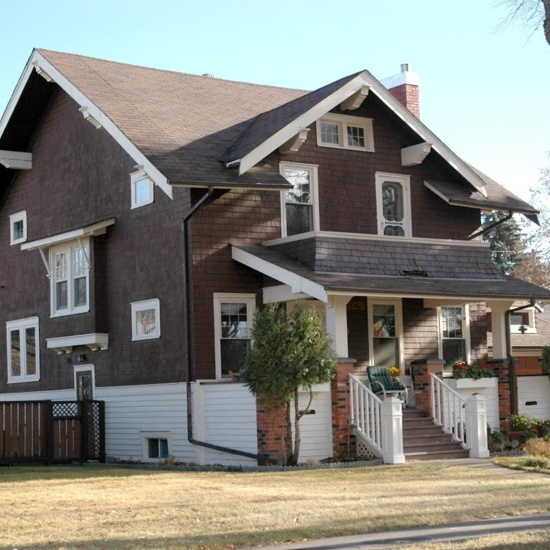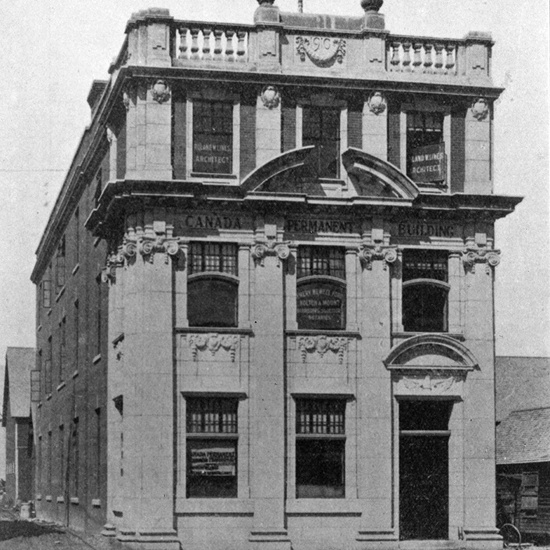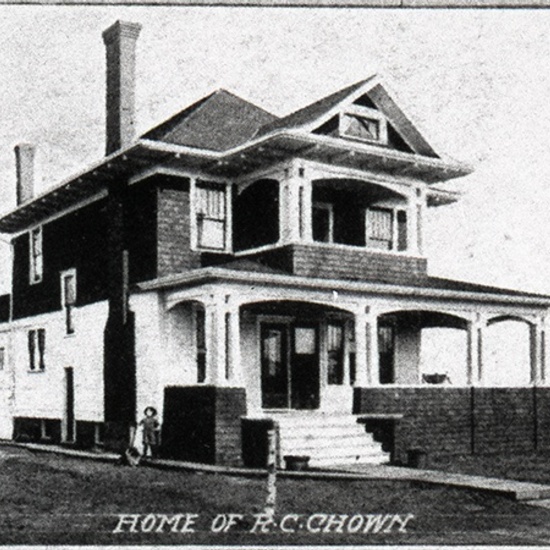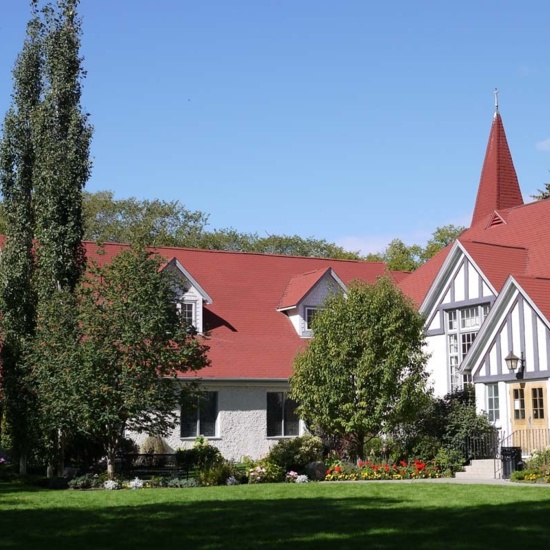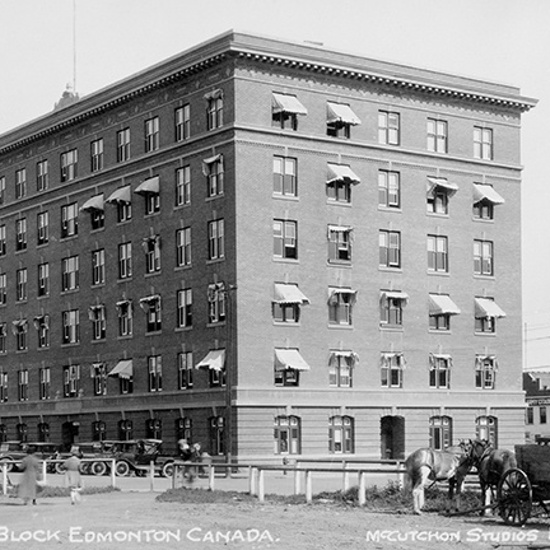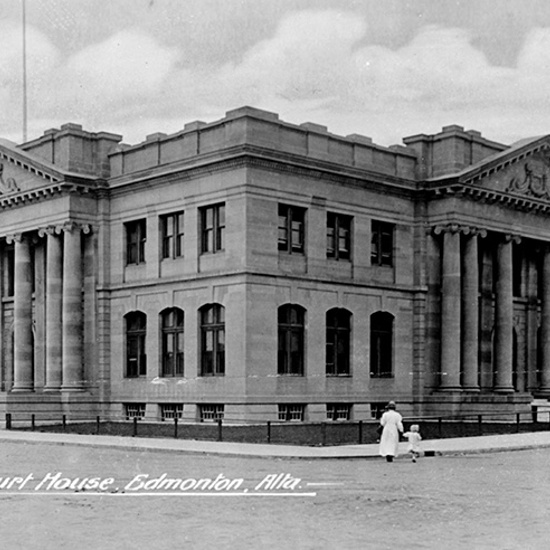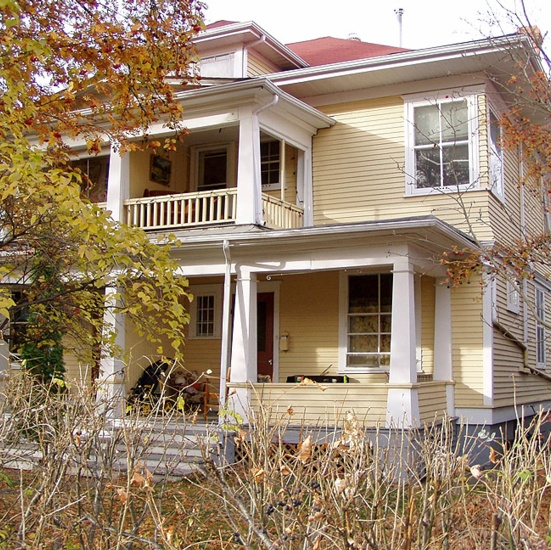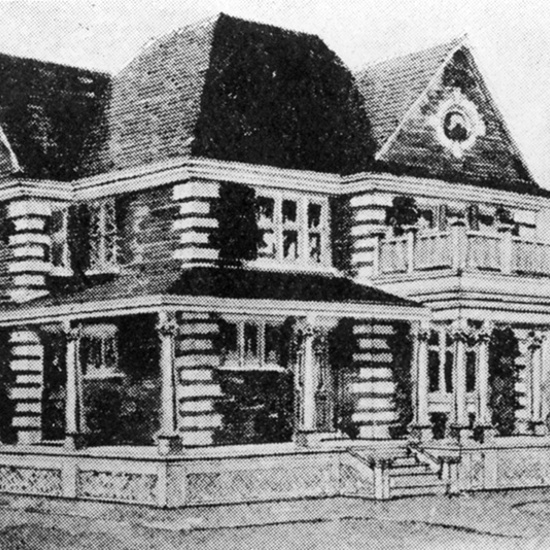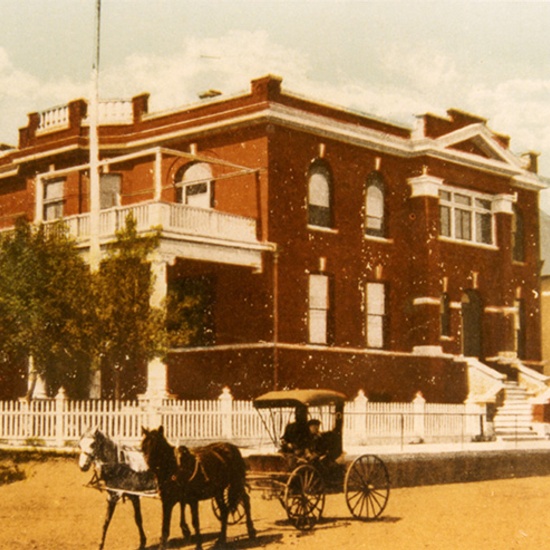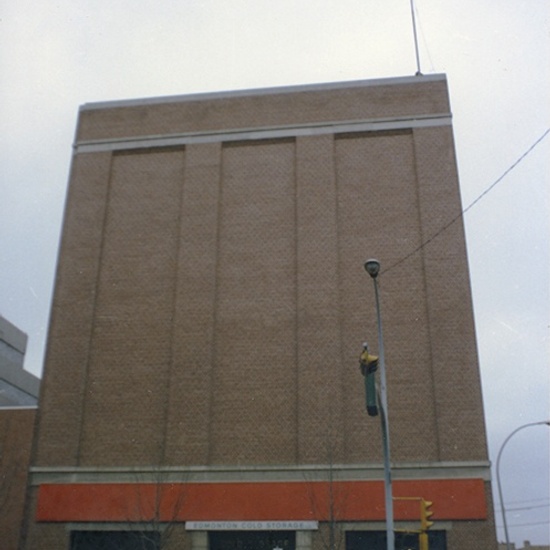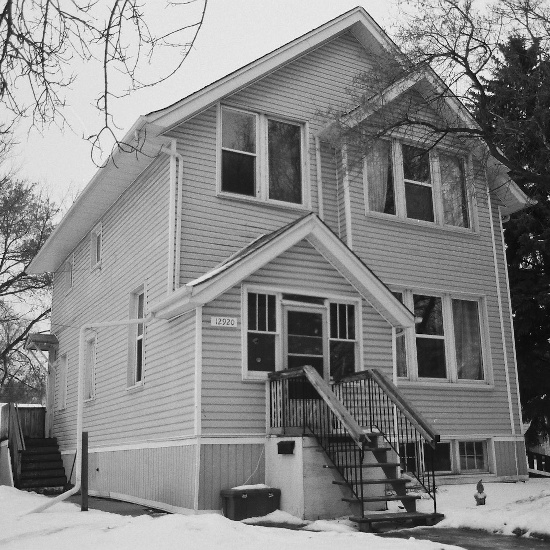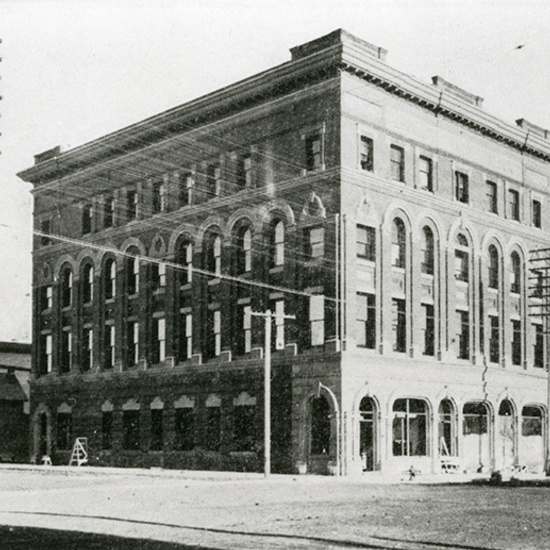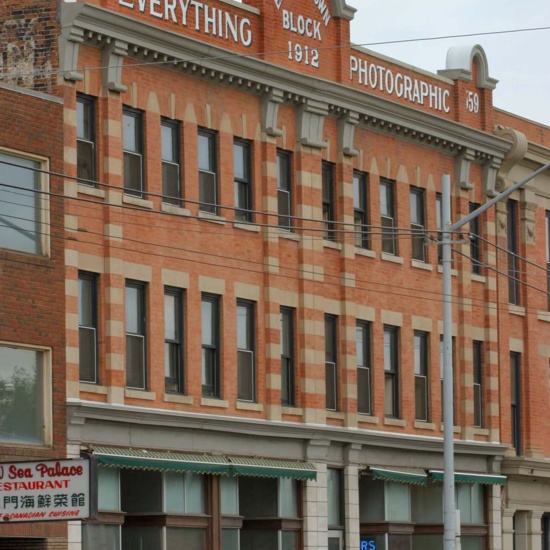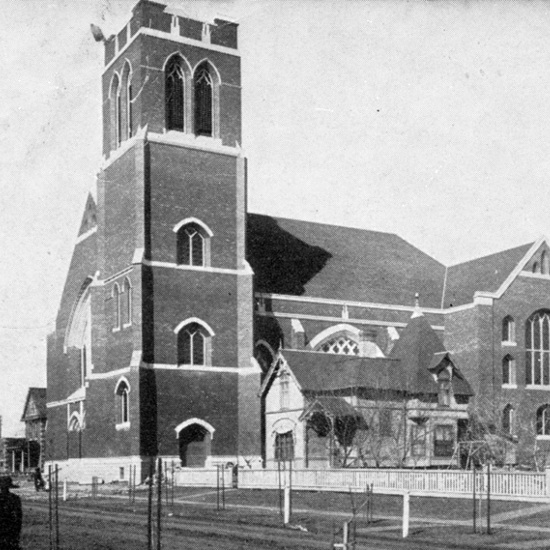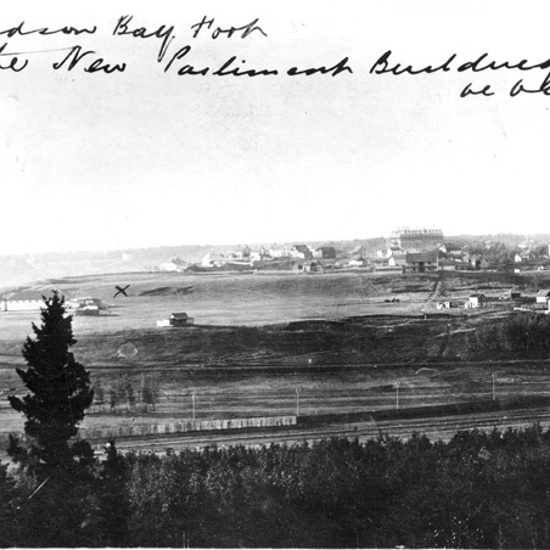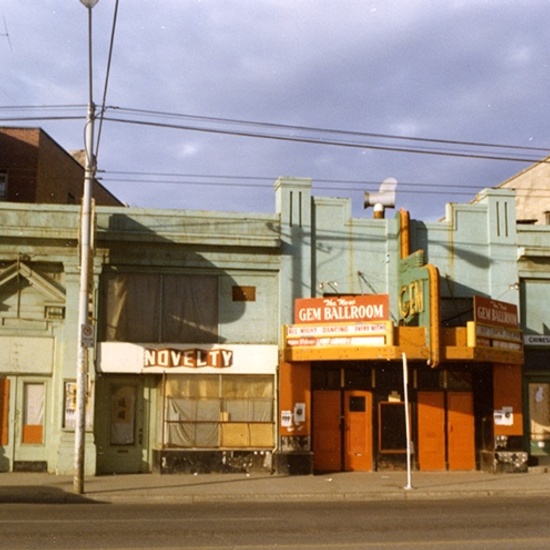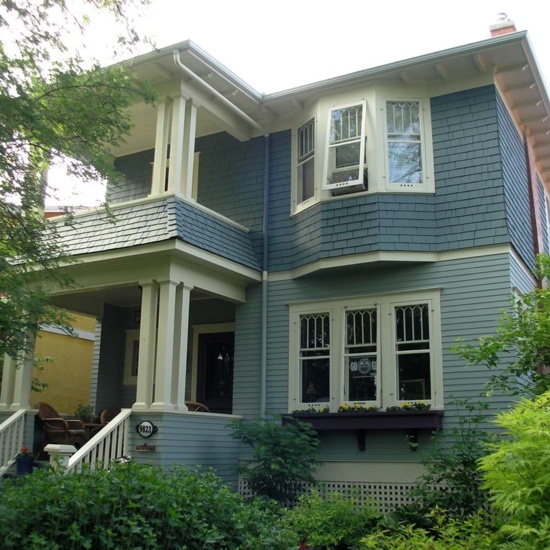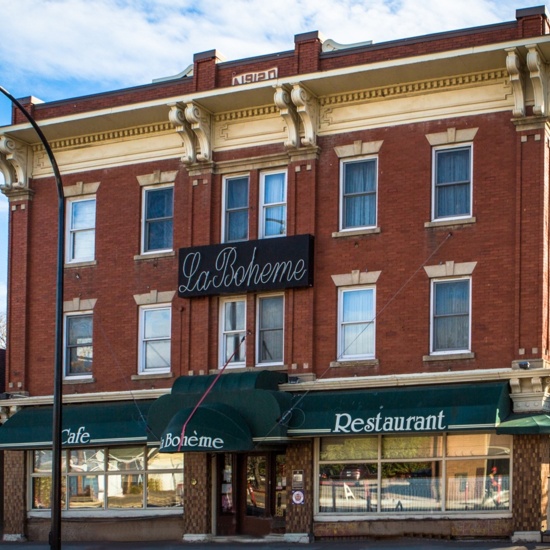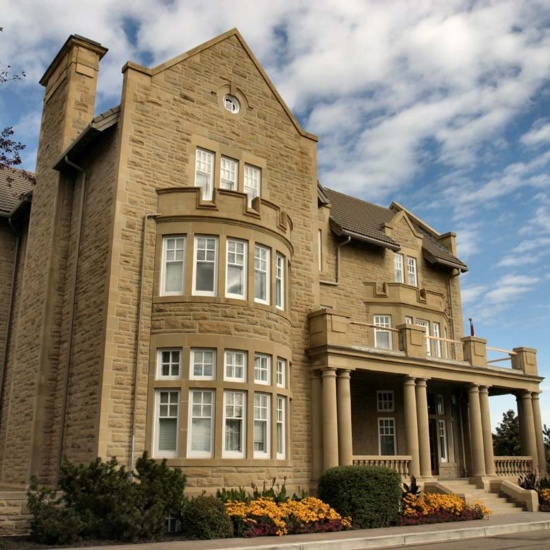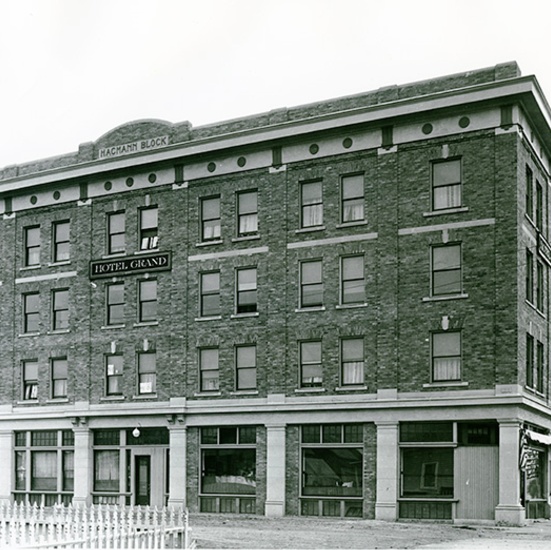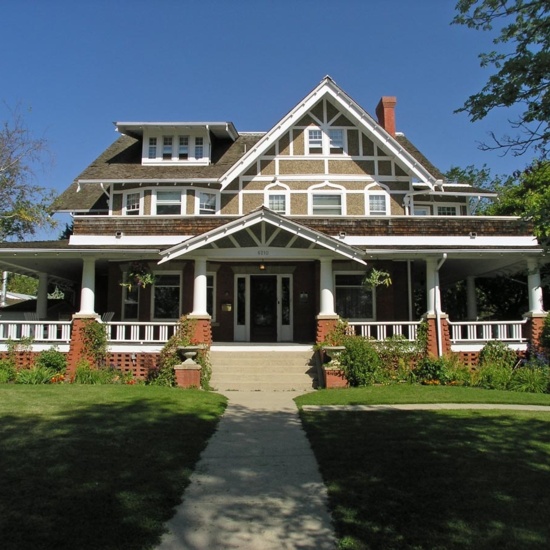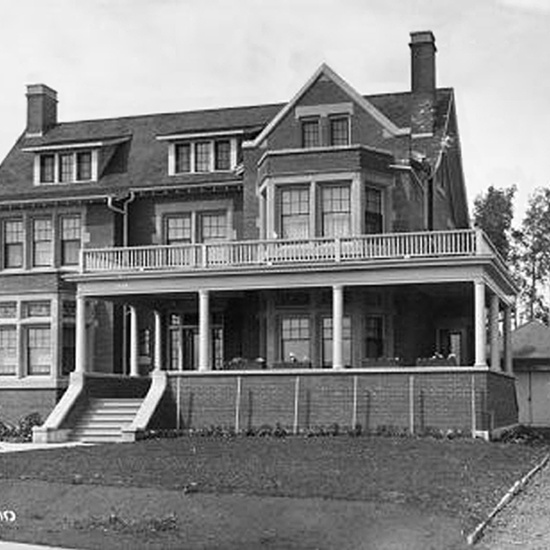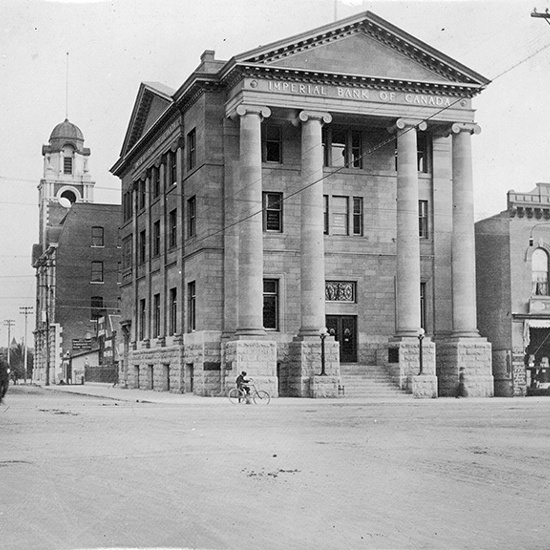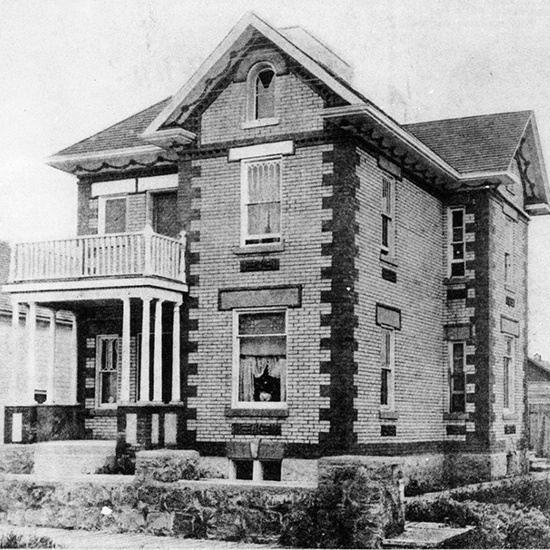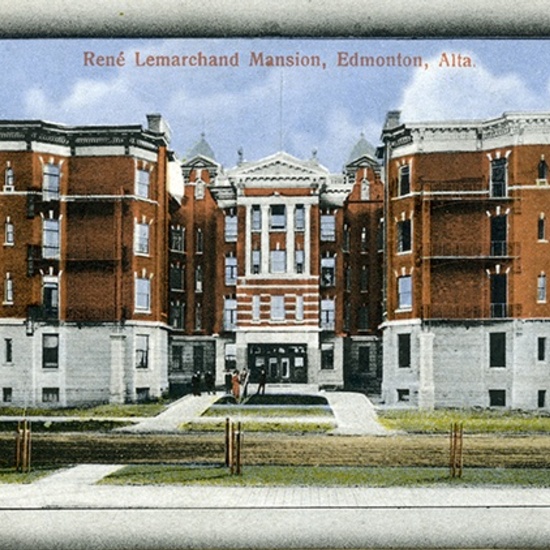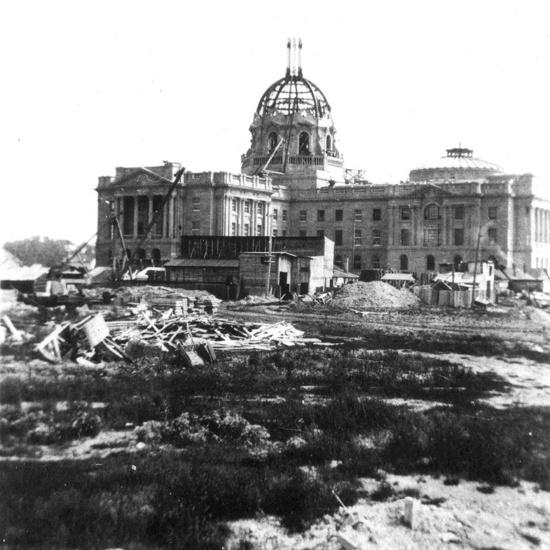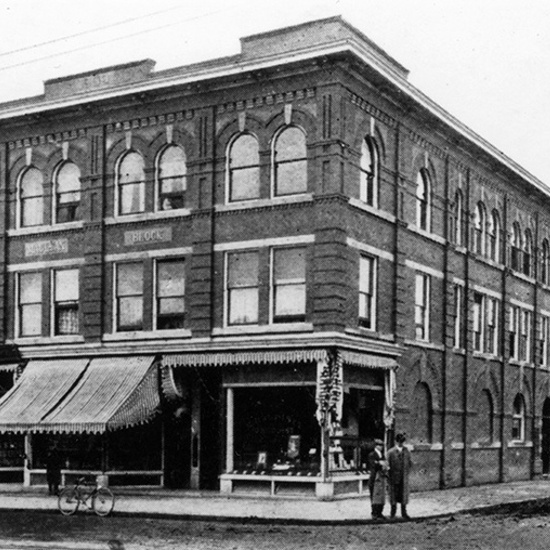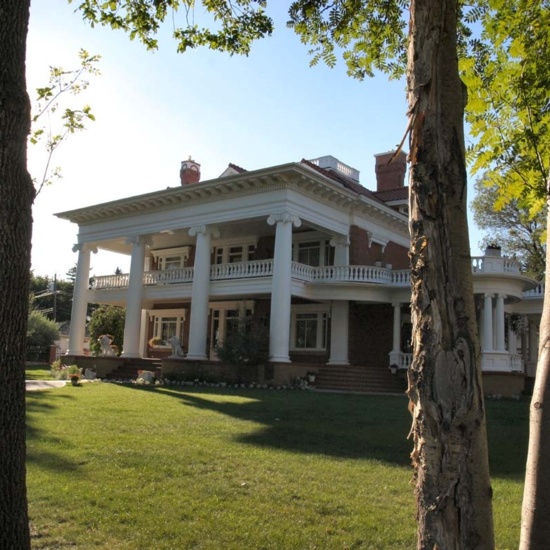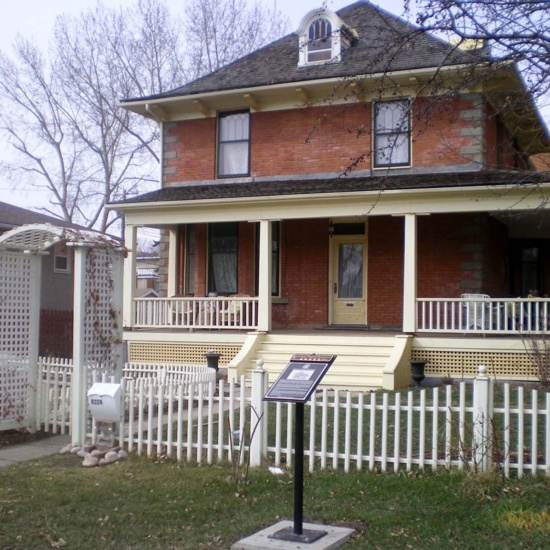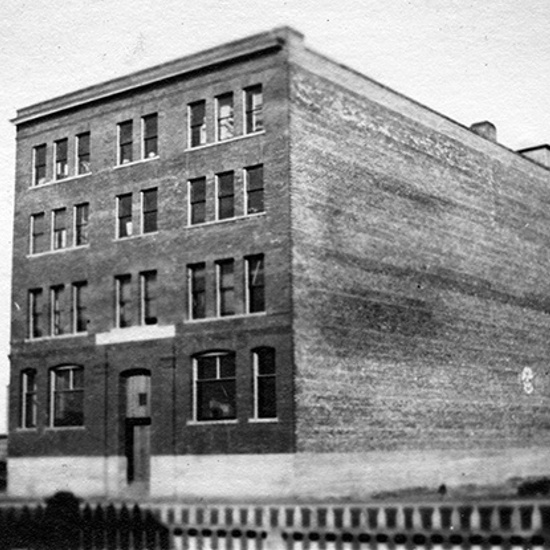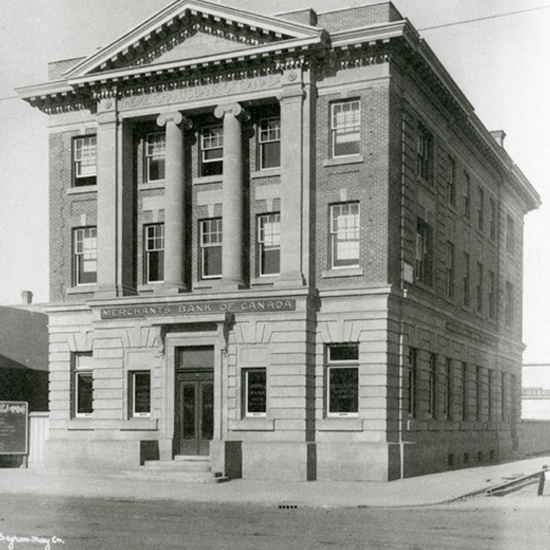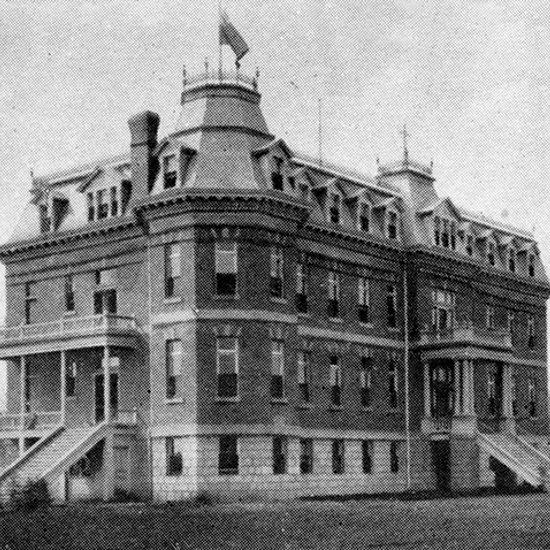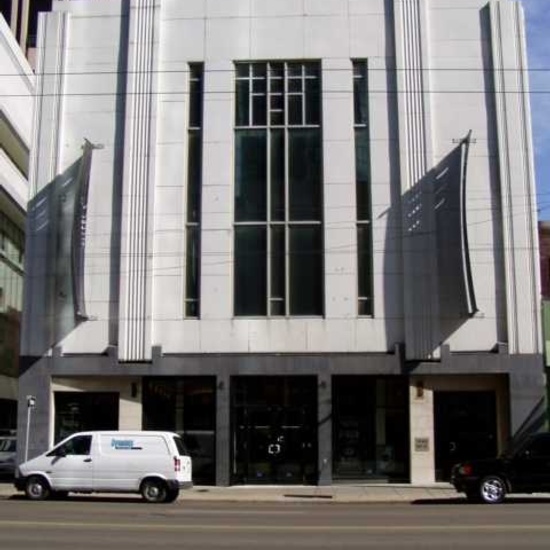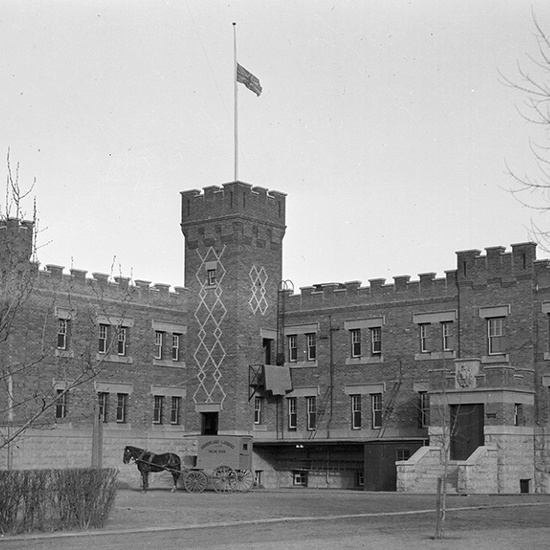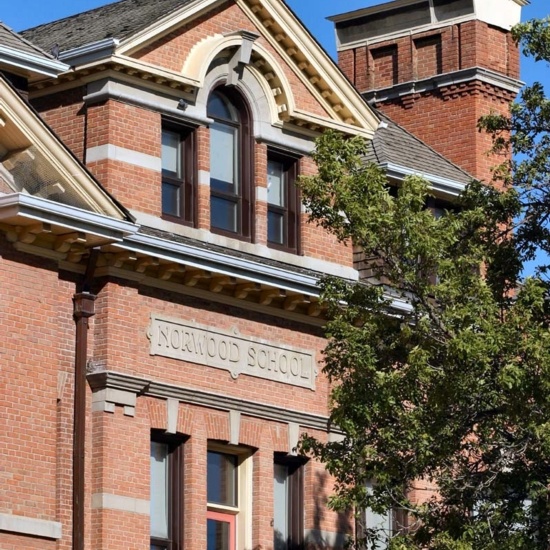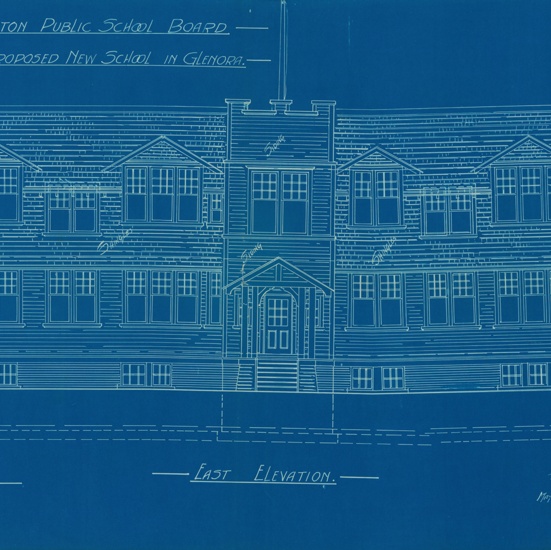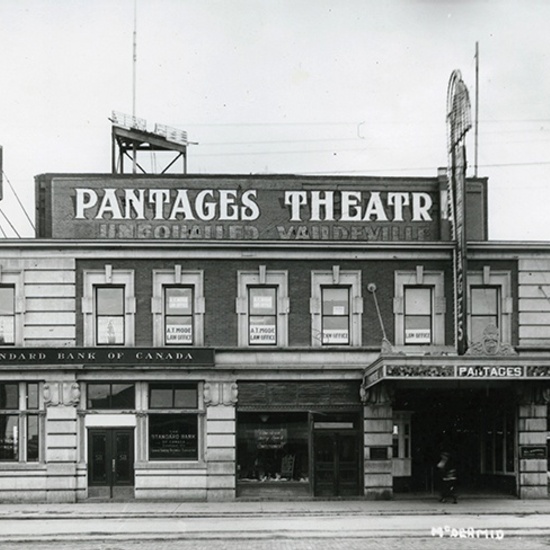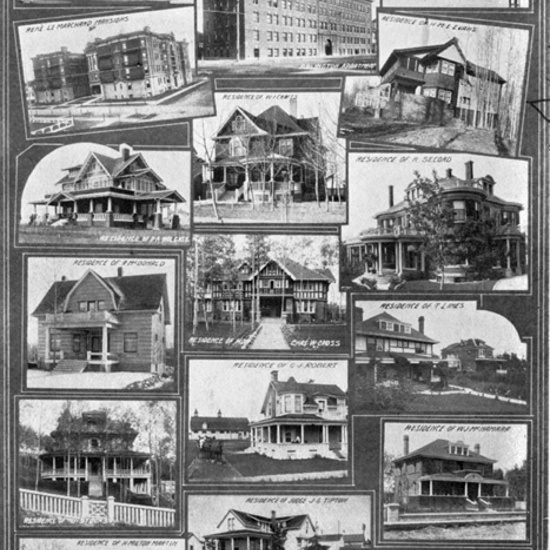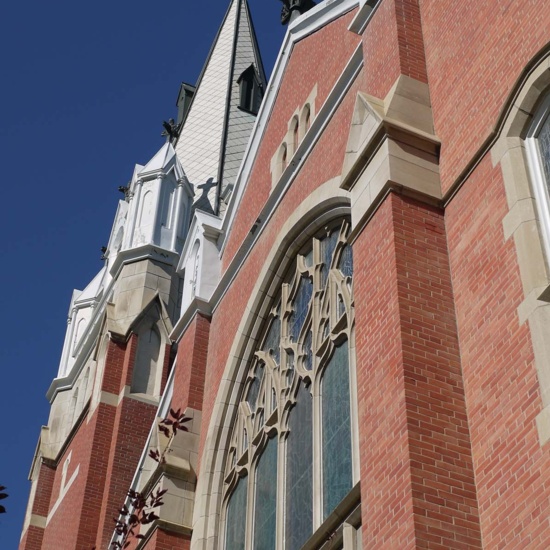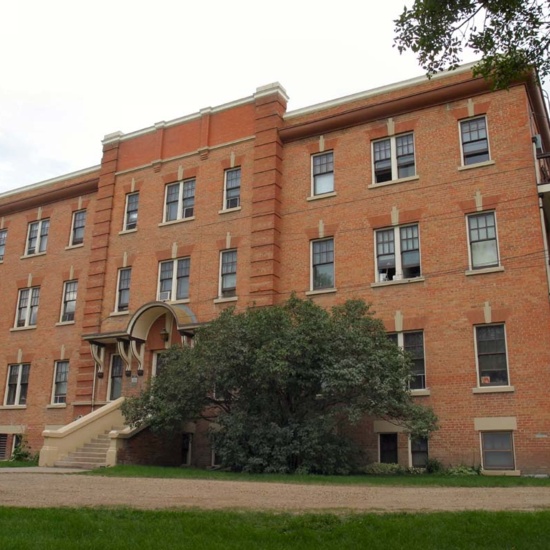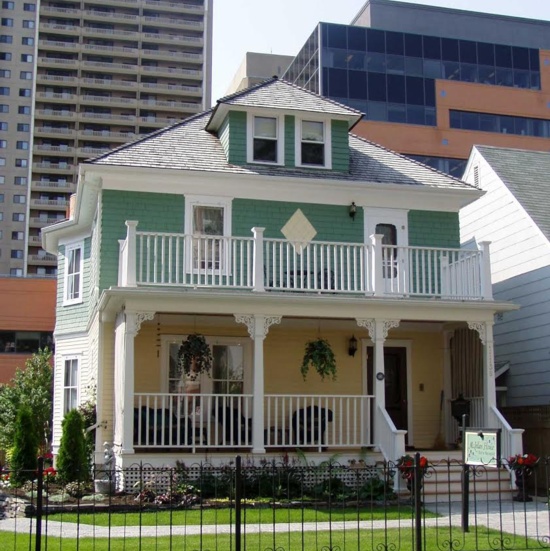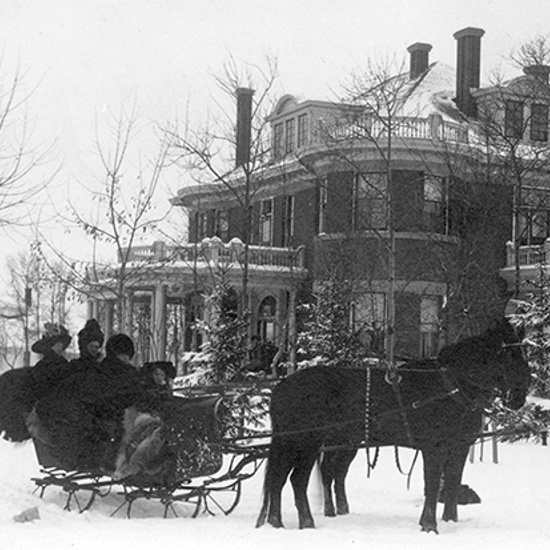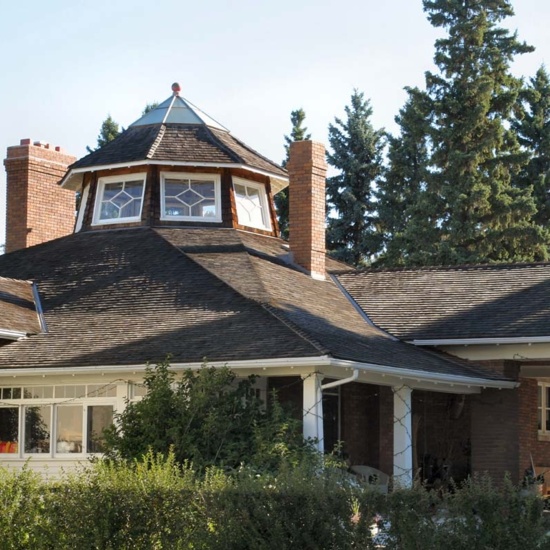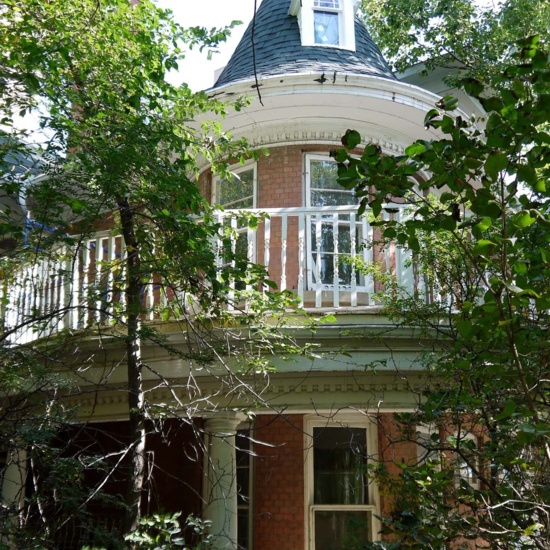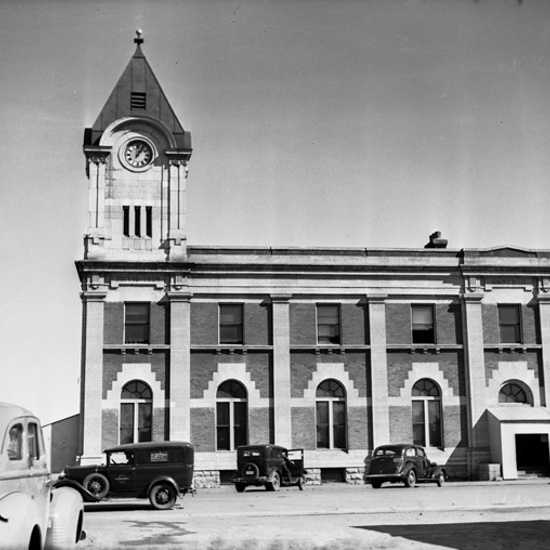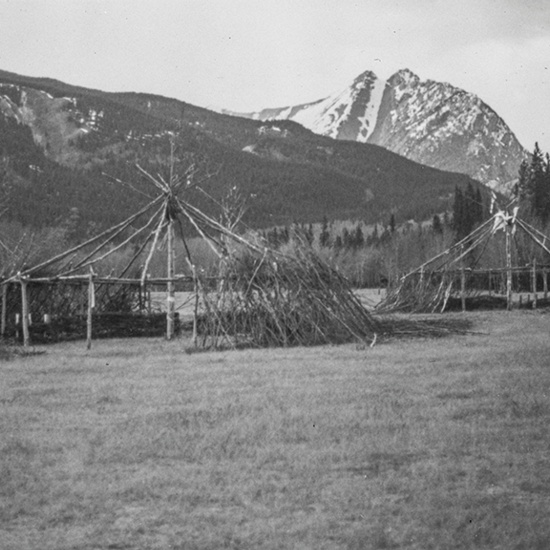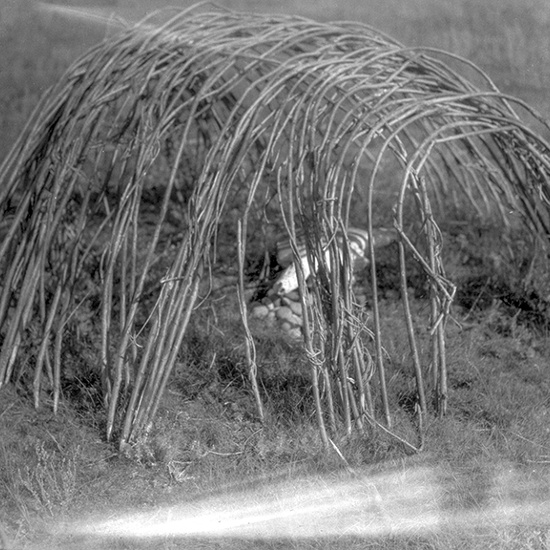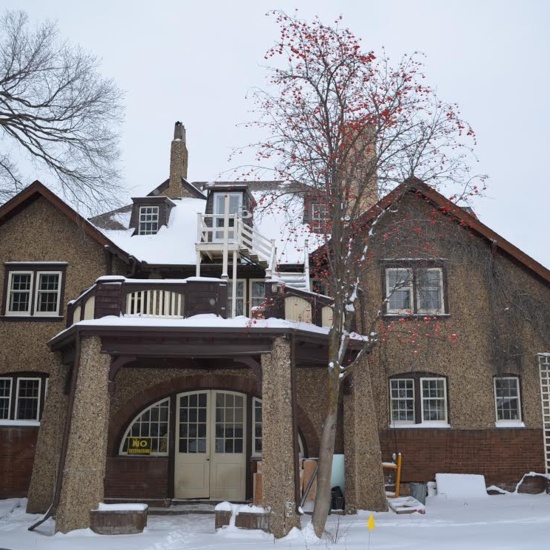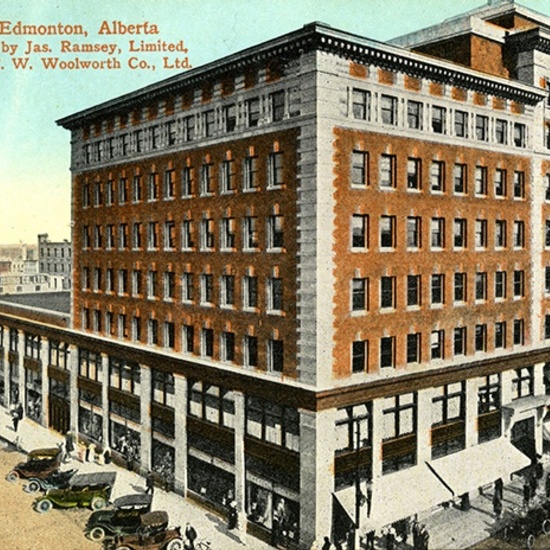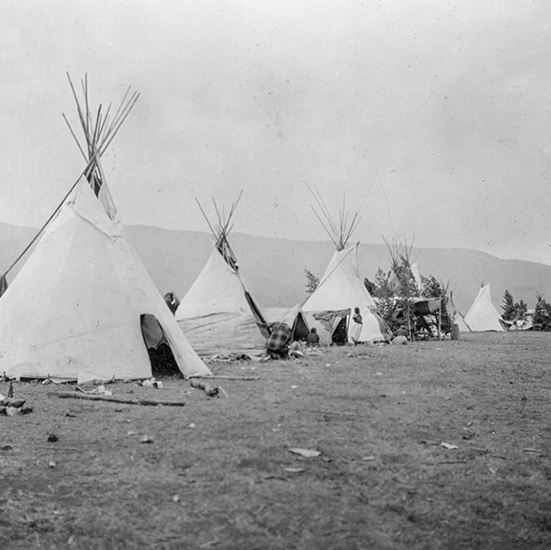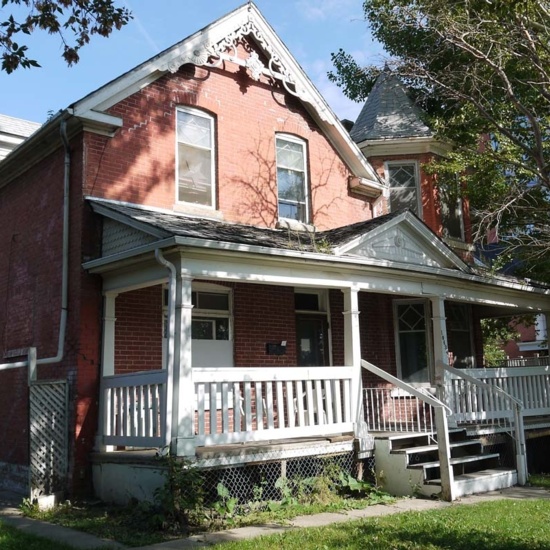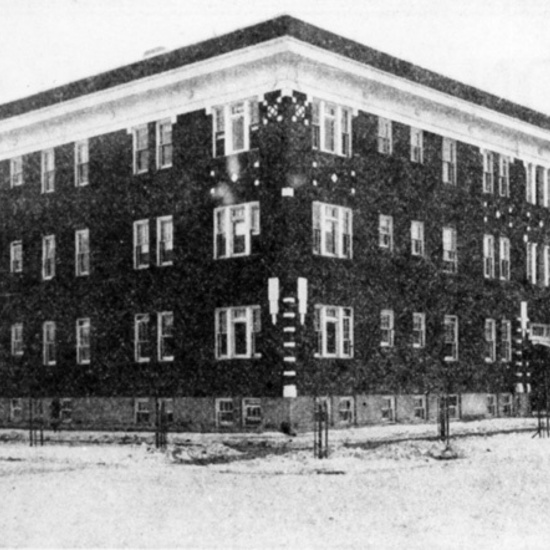Urban Growth: 1905-1913
Between 1905 and 1913 Edmonton experienced incredible growth. The population exploded from less than 10,000 to almost 70,000 in only a few years.
Between 1905 and 1913 Edmonton experienced incredible growth. The population exploded from less than 10,000 to almost 70,000 in only a few years.
Between 1904 and 1912 there were bursts of exceptional growth, during which Edmonton grew very rapidly, causing real estate speculation. This boom, and the requisite increase in prices, made many of Edmonton's early pioneers wealthy.
Historical Context
The early 1900s were a period of growth and expansion, both for a new province and its new capital city. Edmonton was incorporated as a city on October 8, 1904 with a population of 8,350. A factor in the increasing population can be attributed to Edmonton being named the capital of the newly inaugurated province of Alberta in 1906. By 1911, there were almost 25,000 people in Edmonton, which was mostly a result of continued agricultural immigration to the areas surrounding the city. With the establishment of the University of Alberta in 1908, the establishment of Edmonton as a political and academic centre would be cemented in history.
Land speculation, fuelled in part by the Metis Scrip system, allowed for easier settlement for newcomers and real estate development. Immigrants brought experience in building with concrete and steel to the brickyards and mills. Downtown development moved westward along Jasper Avenue into the Hudson's Bay Reserve, and Boyle Street was supplanted as the new urban centre.
Edmonton was at the height of its prosperity in 1912 when the HBC decided to sell the remainder of its land. In the same year, Edmonton amalgamated with the City of Strathcona and continued its southern expansion towards the former Papaschase Reserve lands. As a result, the city's boundaries expanded in all directions, including south of the North Saskatchewan River for the first time. In 1913, Edmonton’s prosperity was clearly evident with the completion of many major building projects including the Alberta Legislature Building, Robertson Presbyterian Church, and the High Level Bridge.
Effects on Architecture
These prosperous years had a profound effect on Edmonton’s architecture. An increase in personal incomes and additional investment from the new province allowed for greater architectural experimentation and therefore more ornate buildings because the strong local economy could provide larger budgets.
From Ontario and the British Isles came the traditional English styles, such as Tudor/Queen Anne and Edwardian. American influences included less ornate styles, such as Foursquare houses and Chicago commercial buildings. There were also European influences in the grandiose Beaux Arts, Gothic Revival and Renaissance Revival buildings constructed at the time. The erection of these permanent structures collided with the presence of Indigenous people, often located in and around the Rossdale flats area.
In 1909 the City implemented a bylaw to regulate the construction, alteration, repair and inspection of buildings. To ensure the safety of citizens, this extensive document described the type of construction required for specific types of buildings in different fire zones.
Details
Duration
1905 to 1914
Structures
Agency Building
Alberta Legislature Building
Arlington Apartments
Armstrong Block
Ash Residence
Athabasca, Assiniboia and Pembina Halls
Balfour Manor
Bard Residence
Becker Residence
Buttercup Farmhouse
C. W. Cross Residence
Canada Permanent Building
Cecil Burgess Residence
Chown Residence
Christ Church
Civic Block
Court House
Cristall House
Dame Eliza Chenier Residence
Downtown Post Office
Dr. Cameron Residence
Duggan Residence
Edmonton Club
Edmonton Cold Storage Company, Ltd.
Elm Park School
Emily Murphy Residence
Empire Block
Ernest Brown Block
First Presbyterian Church
Gem Theatre
Gerolamy Residence
Gibbard Block
Gibson Block
Government House
Hagmann Block/Hotel Grand
Holgate Residence
Holy Trinity Anglican Church
Imperial Bank
John McNeill Residence
Lambton Block
Le Marchand Mansion
MacLean Block
Magrath Mansion
Margaret Martin Residence
Mercer Warehouse
Merchants Bank of Canada
Misericordia Hospital
Moser and Ryder Block
North Edmonton Telephone Exchange
Northwest Mounted Police Barracks
Norwood School
Old Glenora School
Oliver School
Pantages Theatre
Robertson-Wesley United Church
Ross Flats Apartments
Rutherford House
Sarah McLellan Residence
Secord House
Sheriff Robertson Residence
St. Stephen's College
Stocks Residence
Strathcona Public Building
Sundance or Thirst Lodge
Sweatlodge
Sylvancroft
Tegler Building
Tipi
West Residence
Westminster Apartments
Architects
Robert Percy Barnes
Richard Palin Blakey
William G. Blakey
Alfred Marigon Calderon
Taylor, Hogle and Davis
David Hardie
James Henderson
Bidwell Holgate
P. Leonard James
Henry Denny Johnson
L. Keith
John Lang
Joseph N. Côté
Arthur W. Cowley
Arthur Whiddington
Henry Whiddington
Gordon Wynn
Peter Rule
John Rule
D. S. McIlroy
David Ewart
Roland Lines
George Heath Macdonald
Herbert Alton Magoon
William Magrath
Samuel Mclure
Allan Merrick Jeffers
H. J. Moore
Ernest William Morehouse
First Nations
J. A. Senecal
Herbert Story
George E. Turner
Edward Underwood
Unknown
Rick Wilkin
James Edward Wize
Magrath-Holgate Company
Nobbs & Hyde
Rule Wynn Rule
Wilson and Herrald Architects
